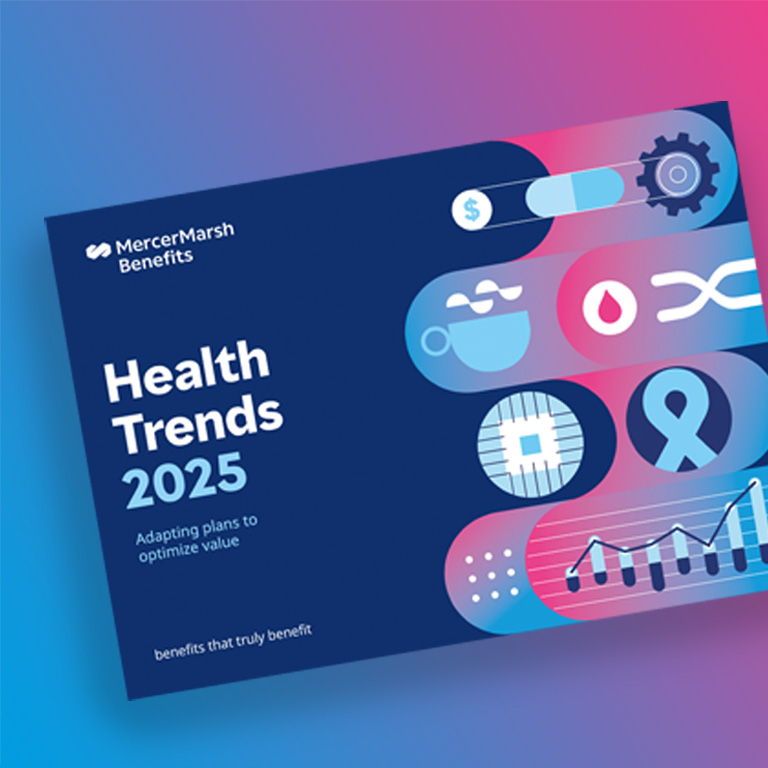
Jamil Kabbaj Renou
Risk Management and MMB Multinational Leader, UAE
-
United Arab Emirates
The global data show the medical trend rate is expected to reach 12.4% in 2023 due to inflation, higher levels of utilisation and changes in treatment mixes.[1]
For instance, in the Philippines, medical personnel shortages caused by outward migration, the ongoing impact of COVID-19, higher claims utilisation and a preference for face-to-face care over telemedicine has resulted in a medical trend three-year average of 20%.
Meanwhile, in Argentina, medical expenses are growing even faster than general inflation due to hyperinflation and scarcity of goods. This means the cost of prepaid medicines doubled in 2022 and is expected to increase by at least 91% in 2023.
In Poland, the three-year medical trend average of 23% is driven by high general inflation, increased minimum wages in the health sector and a challenged public health system, which is resulting in greater use of private services.
Although there are several key drivers for increased health trend rates and rising costs, the most significant concern is inflation. Eighty-six percent of insurers globally believe medical inflation had a significant or very significant impact on 2023 medical trend. This is particularly acute in Europe, where 95% of insurers say medical inflation is a driver of medical trend.
Against this backdrop, employers and their advisors must negotiate with insurers to make sure sensible cost-containment measures; fraud, waste and abuse (FWA) controls, and claims-sharing features, are updated and competitive.
That means employers should to:
The good news is that insurers that responded to the survey expect plan design to take precedence over cost-containment measures, with 57% of insurers globally saying they believe employers will prioritise making plan improvements, compared to 43% who believe sponsors will reduce coverage.
To achieve this, employers should consider cost-sharing features such as:
Ideally, these features should be designed to encourage individuals to behave in a way that promotes a culture of health while also reducing plan costs; for examples of such beaviors include getting treatment on an outpatient basis when appropriate and seeking treatment from preferred network providers.
We believe cost sharing with plan members will continue to be needed to keep plan costs sustainable and plan management effective. However, these measures should be combined with better communication and improved access to preventive care.
Insurers are also focused on the application of AI to support future cost containment; for example, by detecting fraud, waste and abuse. Close to half (44%) of insurers globally are considering introducing this feature, including 60% in the Middle East and Africa.
Although cost-of-living crises and soaring inflation have affected both employers and employees, good-quality health plans remain crucial to business objectives for growth, including attracting, retaining, and engaging employees, and for contributing to broader societal and sustainability objectives.
A good starting point is to understand some of the key health issues driving the higher cost and frequency of claims. Health Trends 2024 data show cancer was the top cause of claims in 2022 by dollar amount globally. This disease, alongside diseases of the circulatory system, also had a significant impact on claims frequency.
Our research shows that endocrine and metabolic diseases — most notably, diabetes, a major cause of kidney failure as well as heart attacks and strokes — continue to affect claims experience, particularly in Latin America and the Caribbean.
Overall, the top three causes of claims by frequency all relate to non-communicable diseases (NCDs). Diseases of the circulatory system, such as hypertension and cardiovascular disease, are now the top cause of claims frequency globally, and respiratory disease is the third highest after cancer.
Employers can mitigate the risk of NCDs through prevention, diagnosis, treatment and workplace support.
For instance, physical inactivity, tobacco use, alcohol consumption, unhealthy diets and air pollution increase the risk of NCDs. Employers should ensure that their benefits encourage and provide preventive care, including health screenings.
Often, individuals may be unaware that they have a condition, in part, due to unaffordable testing and limited access to care. Employers should examine key barriers and consider navigation and advocacy services to help their employees access the healthcare they need. Equally important, employers must also consider benefits coverage gaps, including plan maximums, case management, prescription drugs and income continuation.
Of course, employees who are unwell need support as they perform or return to their duties. HR can help by creating accommodation policies and ensuring managers are trained on supervision of known or invisible conditions, including promoting anti-stigma team dynamics and communication.
Taken together with a focus on prevention, cost-sharing measures will help employers ensure their programs remain affordable — both at an organisational level and for their employees.
[1] Trend rates for 2023 and 2024 are prospective. Unweighted global averages used. Data were gathered in August from 223 insurers, with medical trend rates submitted by insurers validated by our local teams using their own internal book-of-business data, country-specific insurer surveys and subjective assessments. Please note that the United States was not included in this research. For more information on the rates in the US, refer to this year’s National Survey of Employer-Sponsored Health Plans.

Risk Management and MMB Multinational Leader, UAE
United Arab Emirates

Partner and Innovation Leader | Mercer Marsh Benefits
Canada

Article
13/10/2024